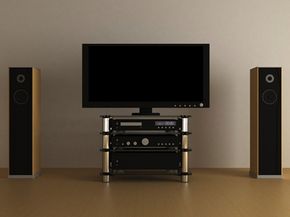If you're a film or music lover, you probably yearn for the crispest, clearest sounds to enhance your audio experience. And with all the recent advancements in technology, there's never been a better time to be an audiophile. If you've got the money to burn, there's a vast array of options at your fingertips when it comes to audio systems.
However, navigating through all those options can be intimidating. You've got to learn the jargon and find out what equipment fits your needs. If you don't do your homework, you might end up dishing out hundreds -- or even thousands -- of dollars on a disappointing or overly complicated audio system. To help you on your way to a better audio experience, we're going to discuss surround sound. This is one popular setup that can make listeners feel as though they're in the middle of the action. There's nothing like it to sweep you away and envelop you in another world.
Advertisement
Surround sound works through the use of multiple speakers, each of which contributes a different audio channel (or component of the original recording). The system allows listeners to hear the full gamut of sound provided by, say, a speeding car. First, you hear the car approaching, then there's the sound of it humming beside you and finally the faint hum of it in the distance as it zooms past you. This is why some say full surround sound for a movielike experience demands at least five speakers: front-center, left-front, right-front, left-rear and right-rear. Film action and dialogue are separated among the speakers for realism, and background noise comes out of the back speakers.
Knowing this can help you understand some figures often used in surround sound jargon. For instance, 5.1 refers to five speakers (meant for the positions we just described) plus one subwoofer, designated by the .1. Subwoofers play very low-frequency sounds. Other common surround sound systems include 6.1 and 7.1, which include additional rear speakers. Regular stereo sound is referred to as 2.0, encompassing two speakers and no subwoofer.
As technology advances, it's difficult to keep up with the standards as well as latest and greatest equipment. So HowStuffWorks has compiled some overarching guidelines that should keep you afloat in the sea of surround sound options.
Advertisement

